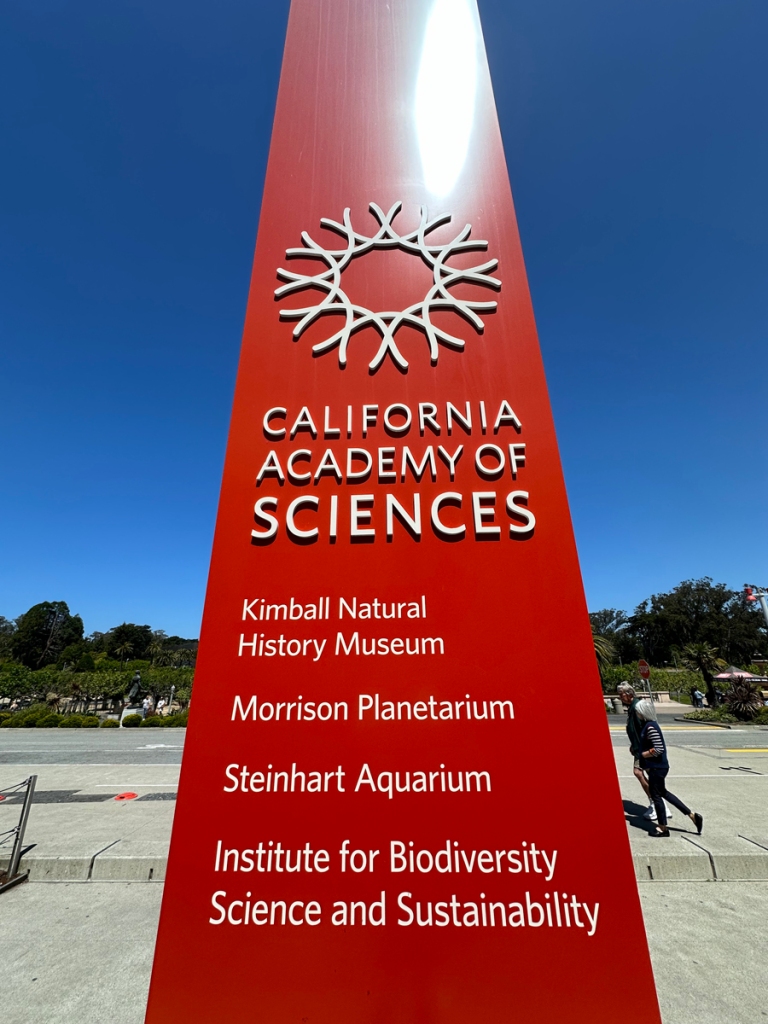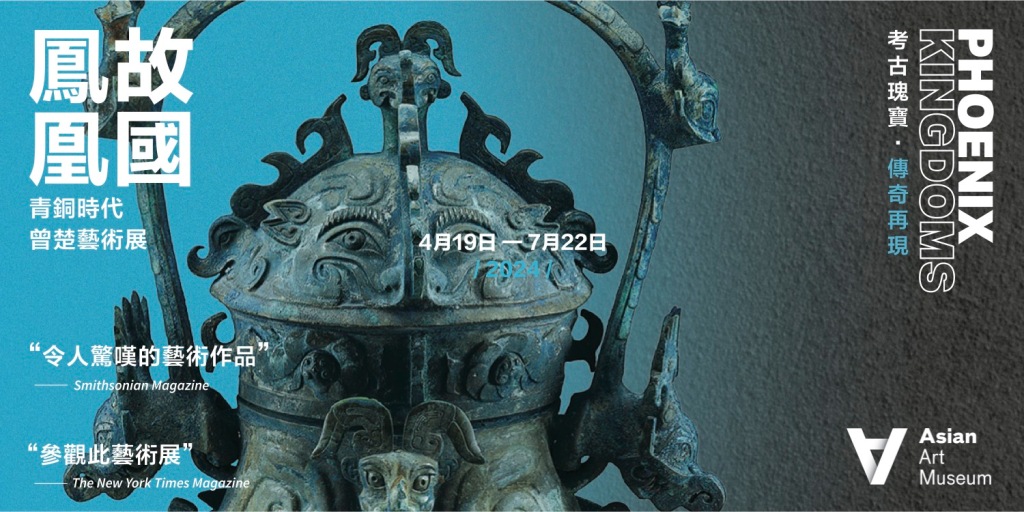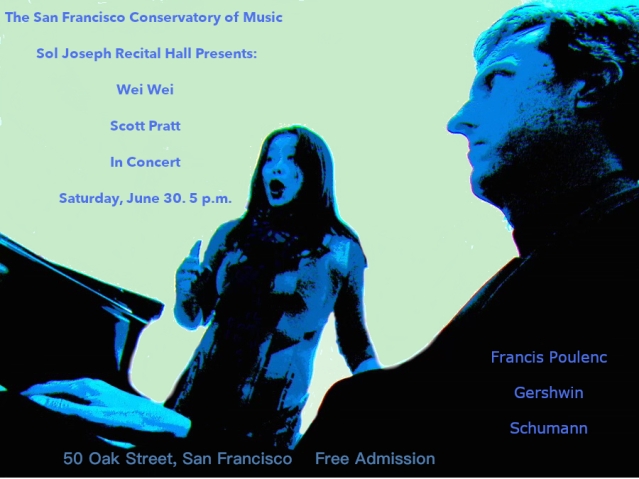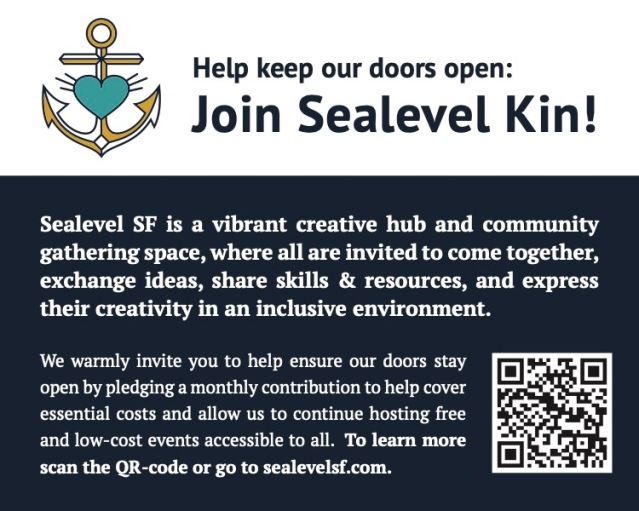From the California Academy of Sciences:
On May 24, the California Academy of Sciences will unveil a new permanent exhibition, California: State of Nature, that illuminates the unexpected connections between the species, places, and people that enable California to thrive.
Located in the museum’s expansive West Hall (next to Osher Rainforest), the new exhibition showcases the natural beauty of four distinct ecosystems: forests, coasts, deserts, and cities. The exhibition’s bold, modern, and colorful artwork and design evoke the various styles of California’s popular culture to infuse a sense of hope for the future of these vibrant ecosystems.
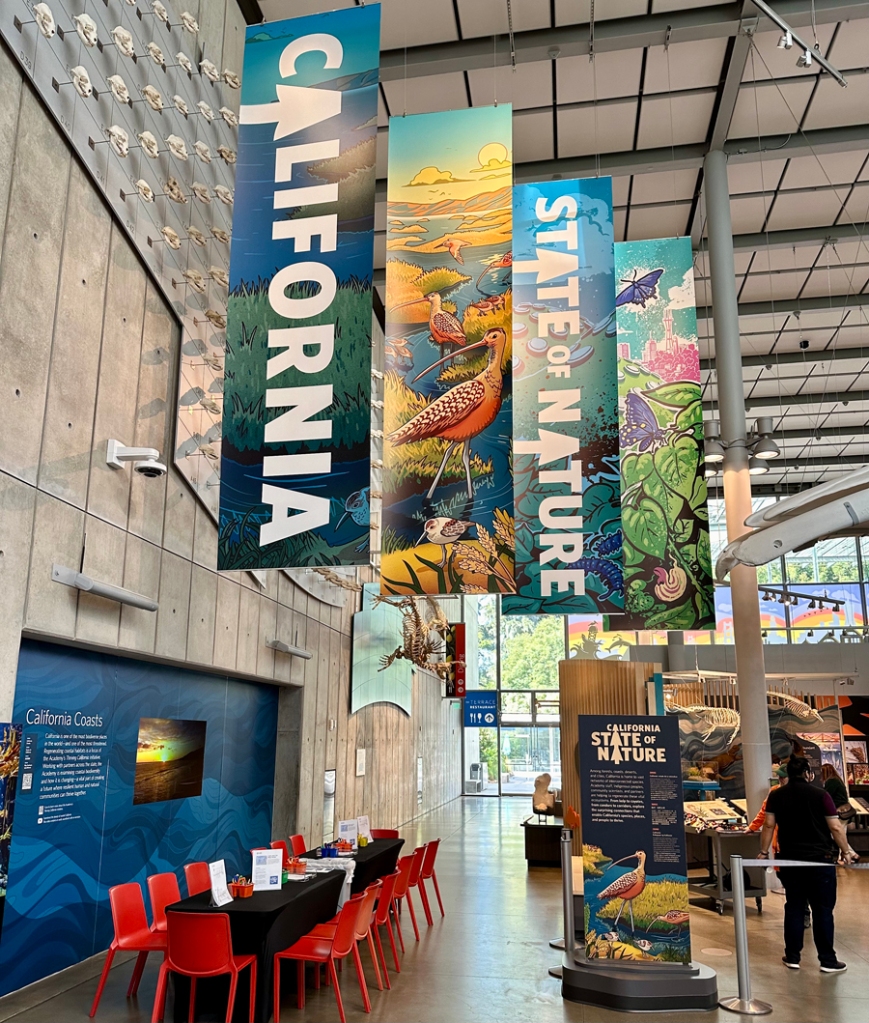
Through specimens, objects, models, interactive experiences, videos, and sculptural elements, the exhibition shares stories about the vast variety and quantity of species in California and highlights Indigenous Traditional Ecological Knowledge and community science initiatives that are shaping a healthy future for the state. This is the Academy’s first major exhibition crafted in collaboration with numerous Indigenous advisorsrepresenting diverse communities across the state. In a continued effort to embrace and honor Indigenous cultures, complimentary tickets are being offered to community members through the American Indian Cultural District, extending a warm invitation to engage with the museum’s offerings.
Two augmented reality experiences bring the iconic California species condors and bobcats to life inside the museum. The Shake House, a fan-favorite earthquake simulator, returns with a new focus on resilient structures in nature, plus Monarch, the famed “last grizzly bear” of California, returns to public view for the first time since 2012 and marks the 100-year anniversary of the species extinction in the state. Video kiosks for each region show short two- to three-minute films to introduce visitors to the scientists, tribal leaders, and community members who are working to protect and regenerate our state’s invaluable biodiversity and natural spaces.
The exhibition also spotlights Academy research and the Academy’s Thriving California initiative, which aims to regenerate biodiversity, build resilience to climate change, and advance equitable access to nature in California.
“From snow-covered peaks and rugged coastlines to scorching deserts, towering forests, and bustling cities, California is like nowhere else on Earth,” said Scott Sampson, PhD, executive director of the California Academy of Sciences. “Our newest exhibition, California: State of Nature, is a love letter to the far-reaching beauty of the Golden State, bringing visitors face to face with some of our most iconic species, like grizzly bears and giant redwoods. We live in the most biologically diverse state in the nation, and people will depart the exhibition with a better understanding of the inextricable connections that interweave us with these myriad life forms. Yet many of these species are now in perilI, and it is our sincere hope that visitors will also be moved to take action and join us on our mission to regenerate California.”
On Thursday, May 23, the public will get a first look at the new exhibition at NightLife: California Native. Artist Katie Dorame (Tongva) will give a talk about her project “Alien Apostles,” which reframes the story of the California missions as an alien horror film; urban ecologist Tali Caspi will speak about the return of coyotes to San Francisco; artist Jesse Hernandez (Yaqui/Mexica), whose depictions of six animals sacred to Indigenous cultures of the Bay Area appear in the 2024 Art on Market Street Poster Series, will lead a painting demo; and Academy Executive Director Scott Sampson will give a talk in Morrison Planetarium on awakening the senses as a path to unlocking transformative environmental action.
Here are some of the standout stories, specimens, and elements within each of the exhibition’s four sections:
Forests and Fire
- Monarch, “California’s last grizzly bear,” returns to public view for the first time in over a decade, during the 2024 100-year anniversary of grizzly bear extinction in California. The mounted specimen serves as both a symbol of loss and hope, offering an opportunity to learn how colonial settlement and extractive practices like targeted hunting led to species extinction and urging us to take action today to conserve and regenerate species and habitats. Learn how the grizzly’s extinction impacted ecosystems, and hear about the bear’s significance and history with Indigenous populations across the state.
- A nine-foot graphic of a condor gives visitors the opportunity to compare their “wingspan” with that of the majestic endangered apex scavenger. Learn about the bird’s cultural significance to Yurok and other tribes across California, hear about successful reintroduction efforts that brought the bird back from the brink of extinction, and scan a QR code to see augmented reality condors come to life.
- The forest scent station awakens the senses with the unmistakable smells of the forest, from pleasant to pungent. Sniff a few signature arboreal aromas: douglas-fir, California bay laurel, yerba santa and fetid adder’s tongue.
- A short video underscores that fire can be beneficial. Delve into Academy wildfire research in the Sierras, hear from tribal membersabout the importance of Indigenous cultural burning, and learn how intentional fire supports healthy ecosystems.
- Touchable bronze bird casts activate the calls of three birds: red-breasted sap sucker, brown creeper, and olive-sided flycatcher. Real scientific specimens of a Northern pygmy-owl and Western tanager, plus manzanita berries and ponderosa and sugar pine cones, help tell the story of Academy research on the impact of fire and climate change.
Urban Connections
- The Shake House, the Academy’s popular earthquake simulator, returns with a new emphasis on resilient natural structures, like birds nests and beehives, as well as traditional Ohlone architecture like the tule house.
- A mounted coyote specimen, which the Academy received from San Francisco Animal Care and Control after it was hit by a car, tells the story of urban human and wildlife coexistence, conflicts, and opportunities.
- Learn all about wildlife camera traps and the invaluable information they provide urban ecology researchers. Watch camera trap footage of raccoons opening puzzlesfor cat treats, and try it yourself at an interactive puzzle station.
- Experience firsthand how wildlife crossings make it possible for animals to thrive in urban environments by crawling through a mock wildlife crossing tunnel, and see camera trap footage of your mini-migration.
- Take in a mounted bobcat specimen and use your phone to trigger AR that brings a bobcat kitten to life.
- A short video introduces the work of the Schell Lab at UC Berkeley, led by Academy Trustee and urban ecologist Christopher J. Schell, PhD, to research animal behavior, population genetics, biodiversity science, and environmental justice to build more just, biodiverse, and resilient cities.
- Connect with community science by learning about City Nature Challenge, and practice observation with an interactive naturalist notebook drawing station to sketch California butterflies and their host plants.
Coastal Communities
- Dive into the coastal connections of the Chumash people with newly commissioned cultural objects, including a story skirt and abalone and dogbane necklace.
- Gaze up at a real 100-foot-long blue whale skeleton, touch one of its vertebra, and learn how the Academy and conservation partners are researching and supporting wild whale populations.
- Dive into the wonderful world of kelp forests, an ecosystem that helps sequester carbon while providing habitat for over 1,000 different species.
- Take in a real sea otter skeleton and a real humpback whale skull while learning how different species rely on and support underwater forests.
- Marvel at a model of the massive sunflower sea star, a key predator whose role keeping kelp-eating urchins in check has been threatened by the mysterious sea star wasting disease. Watch a video to learn how the Academy and partner aquaria across the state are bringing this threatened species back.
- Touch a two foot long model of a Steller’s sea cow skull and learn how this extinct herbivore is inspiring future kelp restoration strategies.
- Touch a Pacific herring cast to activate audio of hungry sea lions.
- Connect with the San Francisco Bay’s unique ecology. Learn how Cafe Ohlone is carrying on the tradition of gathering salt from the bay, and hear how species like the Olympia oyster, harbor porpoise, and bat ray are making a comeback.
Dynamic Desert
- Real specimens of Mojave Desert plants and animals illustrate the adaptations that allow them to survive and thrive in the arid climate, including mounted specimens of: desert spiny lizard, red-tailed hawk, gila woodpecker, silver cholla cactus, barn owl, desert kit fox and black-tailed jackrabbit.
- Watch a video of the desert’s dramatic transformation from day to night; hear from the women in STEM leading dark sky research; and learn how animals like birds, bats, and insects rely on dark skies for migration, foraging and pollination.
- Wonderboxes invite guests to experience the desert through sight, sound, and touch:
- Touch the sand beneath a model Mojave fringe-toed lizard to feel the radiant heat that warms these reptiles.
- Raise a flap to reveal a burrowing owl popping its head out of its nest.
- Peek inside a diorama to reveal a cast dune scorpion and the starry sky it uses for navigation.
- Lift a door to hear the screech of a barn owl on the hunt for its prey, the agile kangaroo rat.
- See a dazzling array of mounted white-lined sphinx moths, whose proliferation often occurs following a superbloom. Plus, learn more about the rare flowery phenomenon in a video.
- Learn how biodiversity surveys in the Mojave Desert are helping Academy researchers better understand the complex web of life. Meet a new-to-science scorpion described by high school students working with Academy scientists, and see some of the tools used for scientific collecting.
Rolling out in May and June, new daily public programs including California Animal Storytime, Children’s Puppet Theater: Song of the Salmon, and Dr. Otter’s Kelp Clinic will offer guests the opportunity to learn about California’s ecosystems and the flora and fauna that call them home. See the daily calendar for program times and details.

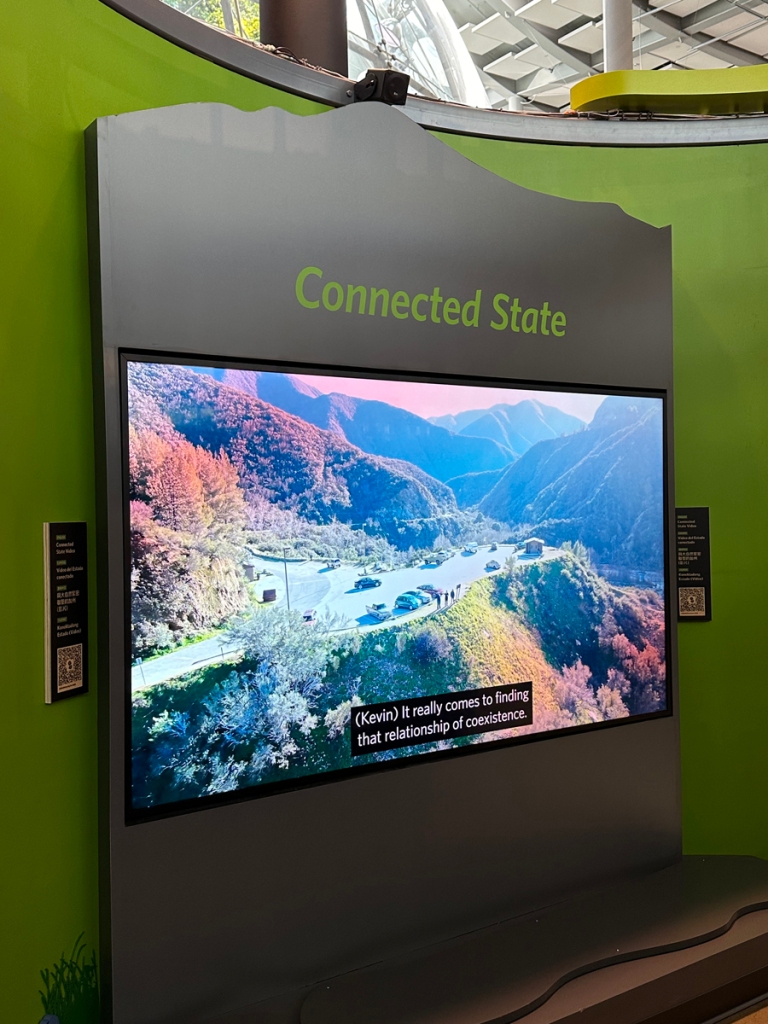
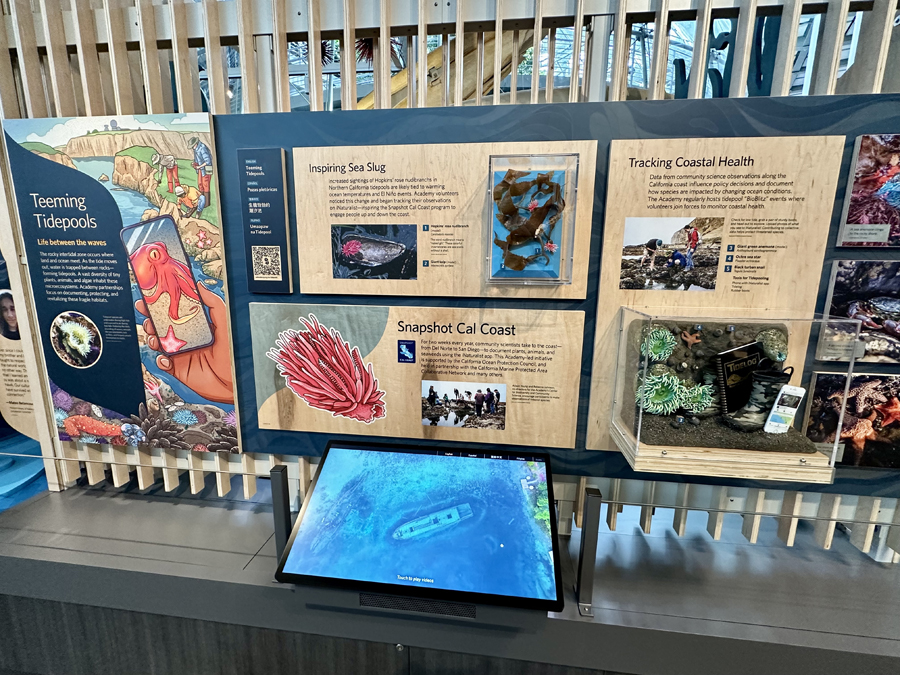
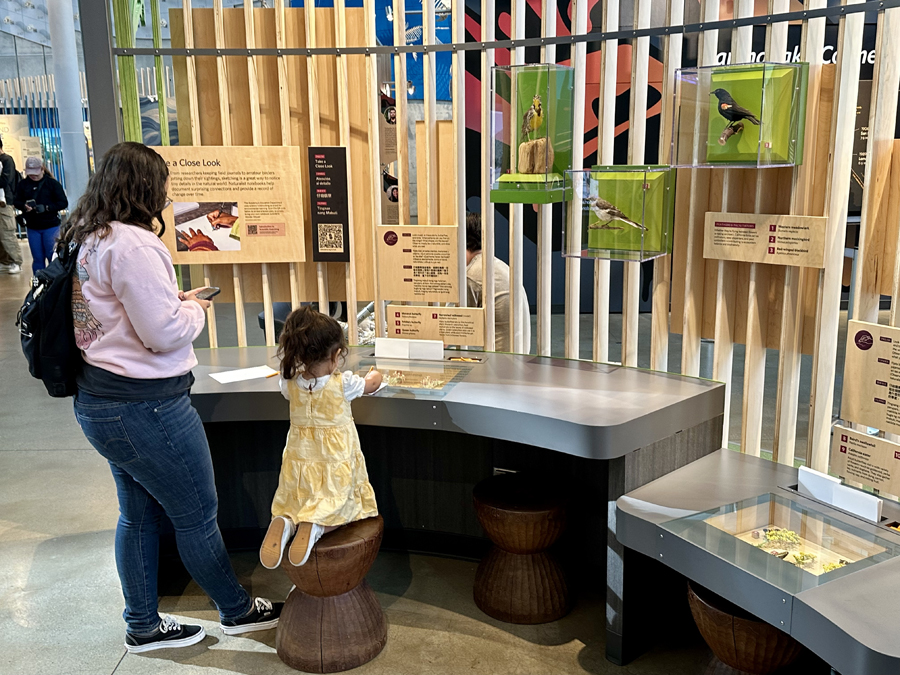
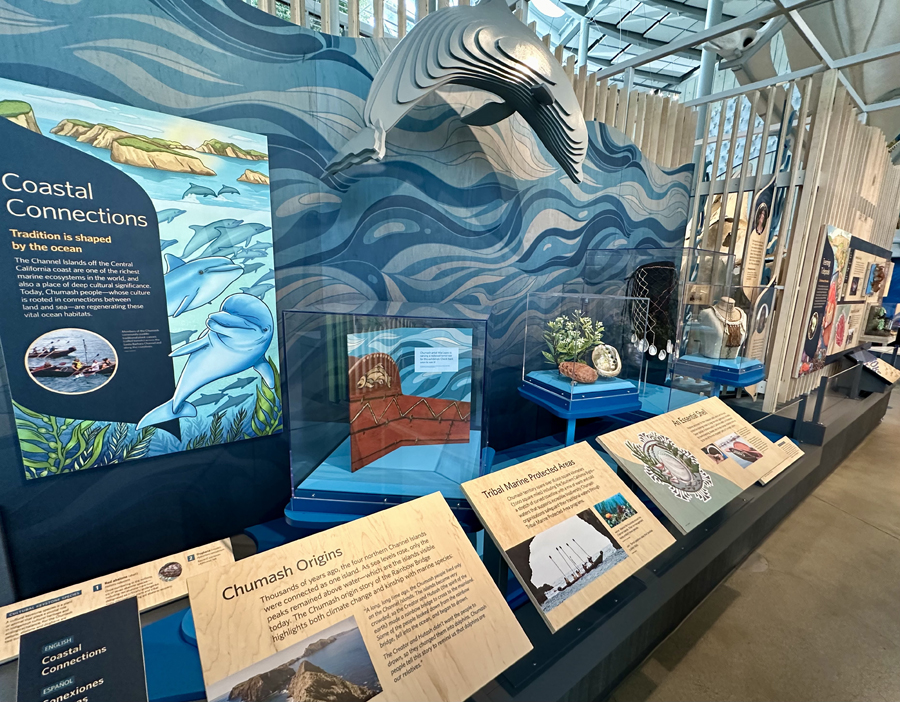


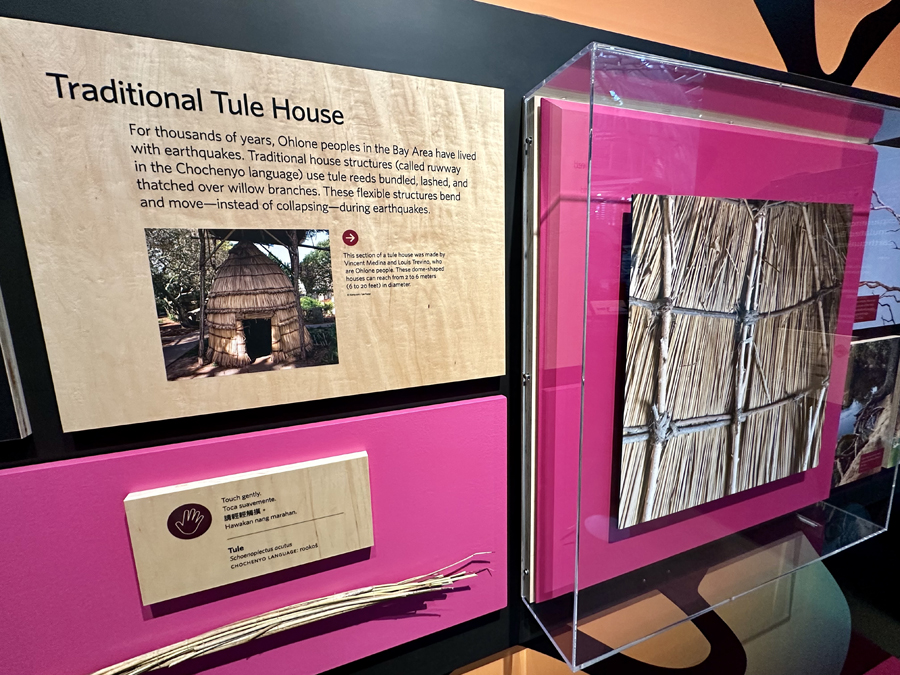
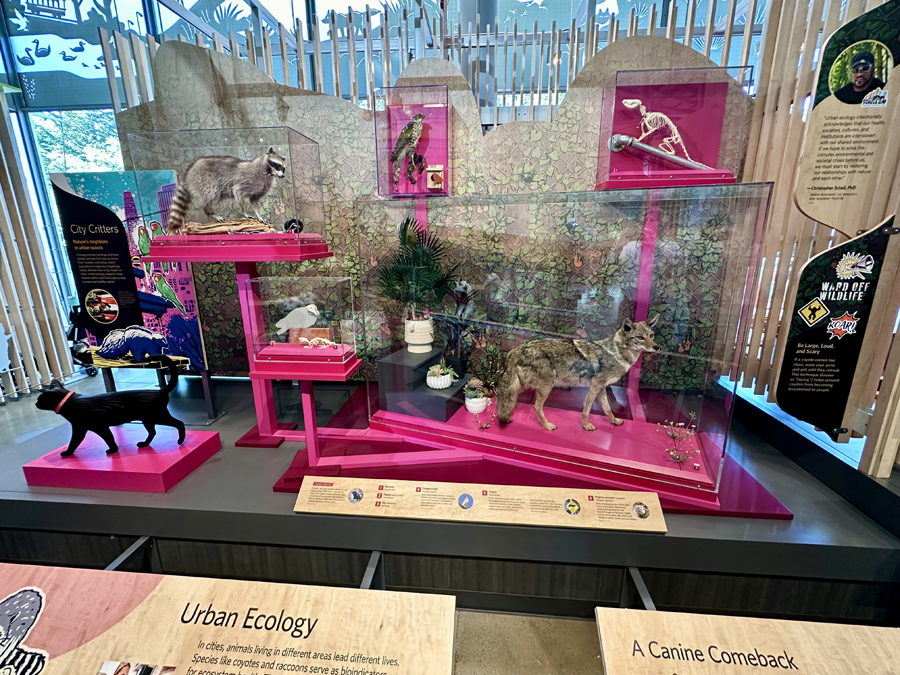
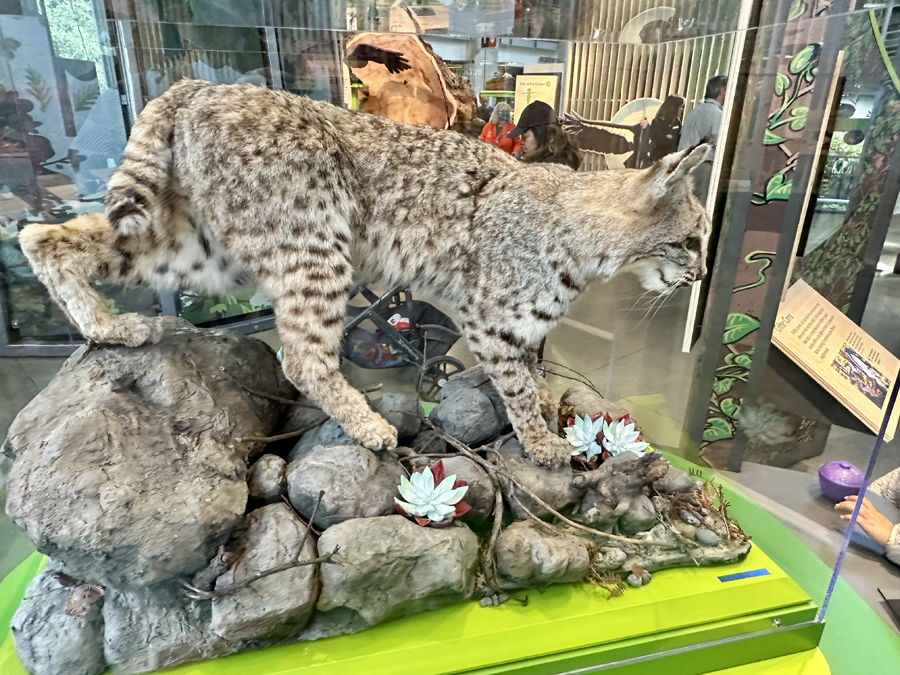
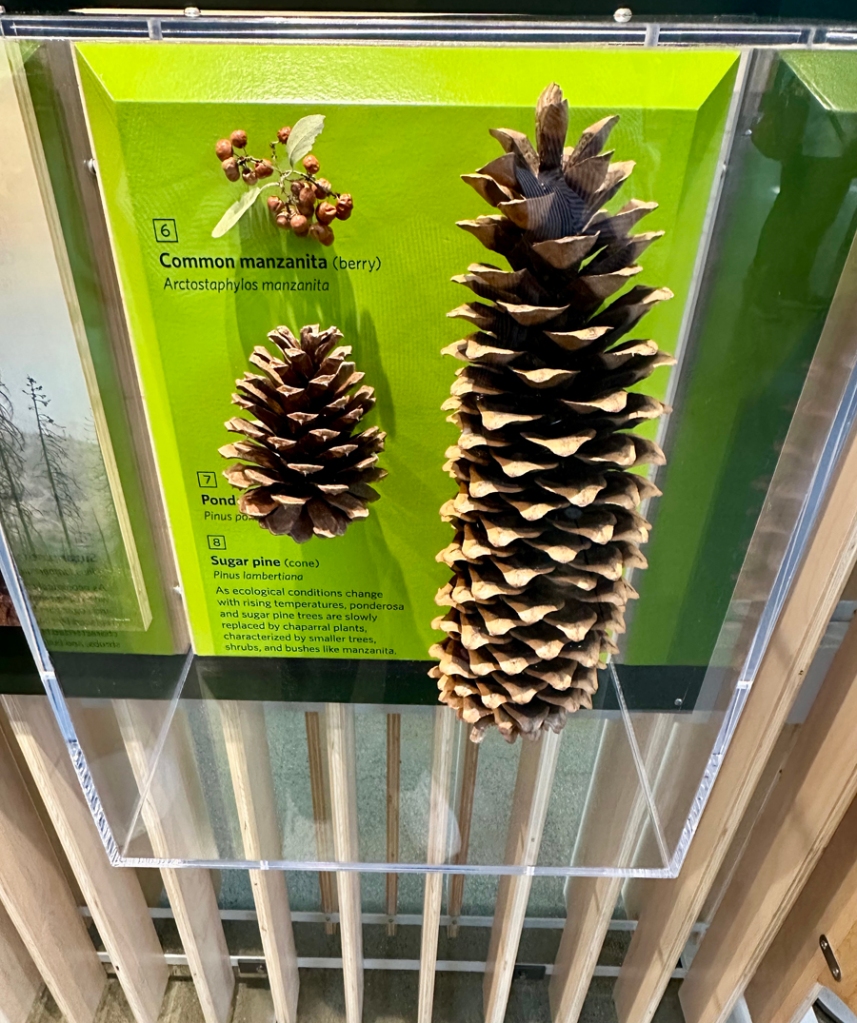
Learn more at https://www.calacademy.org/exhibits/california-state-of-nature
Categories: california academy of sciences

